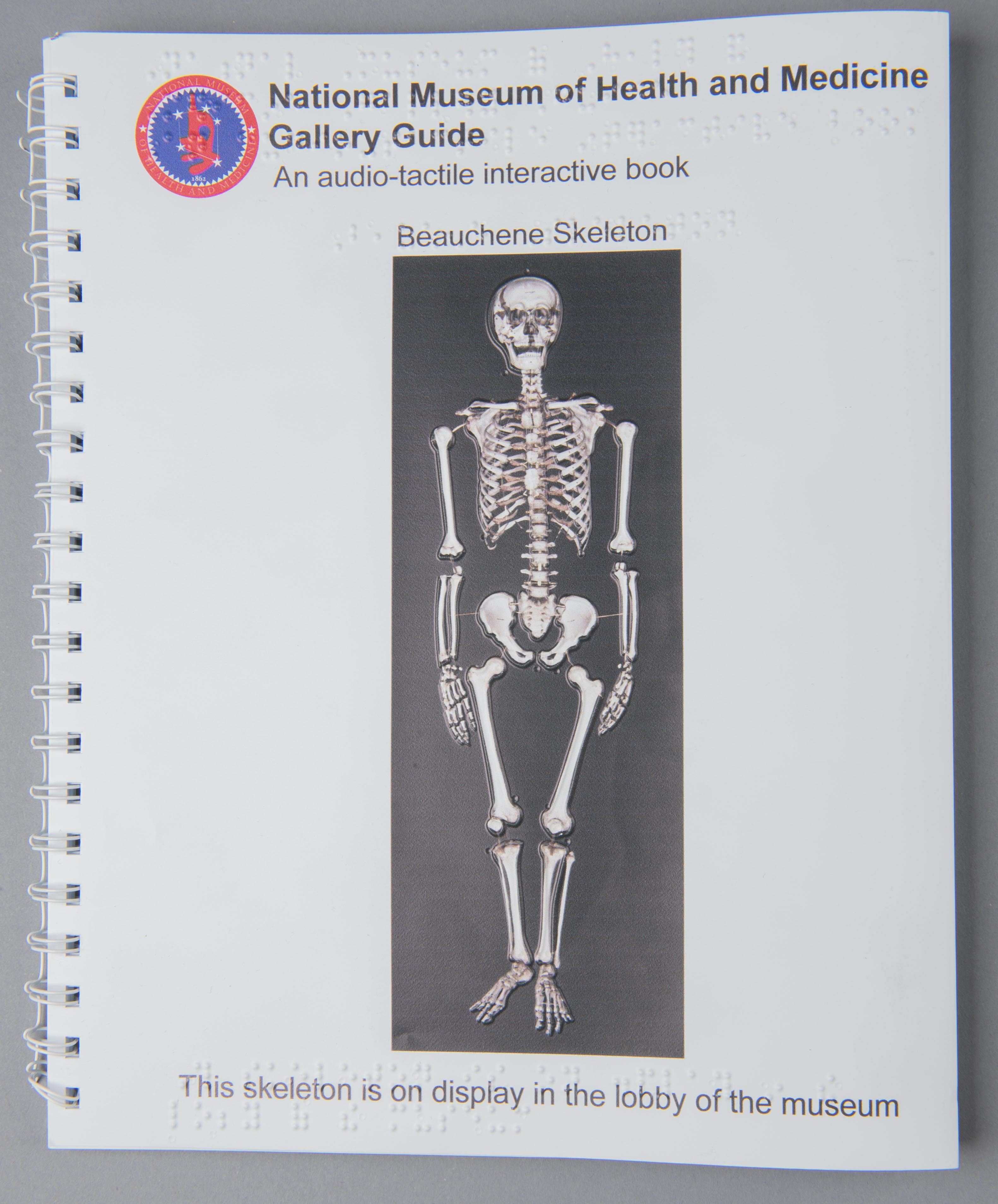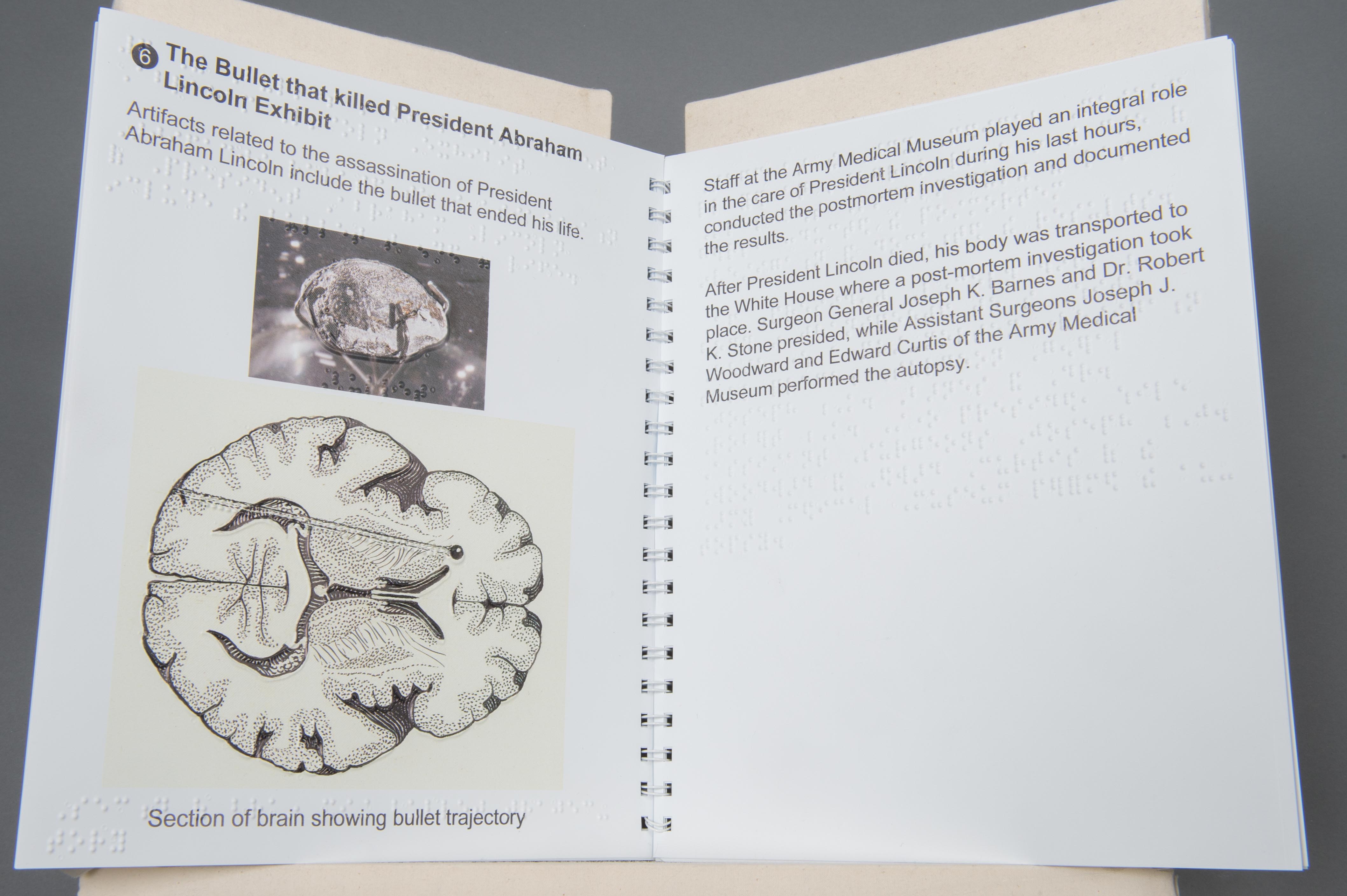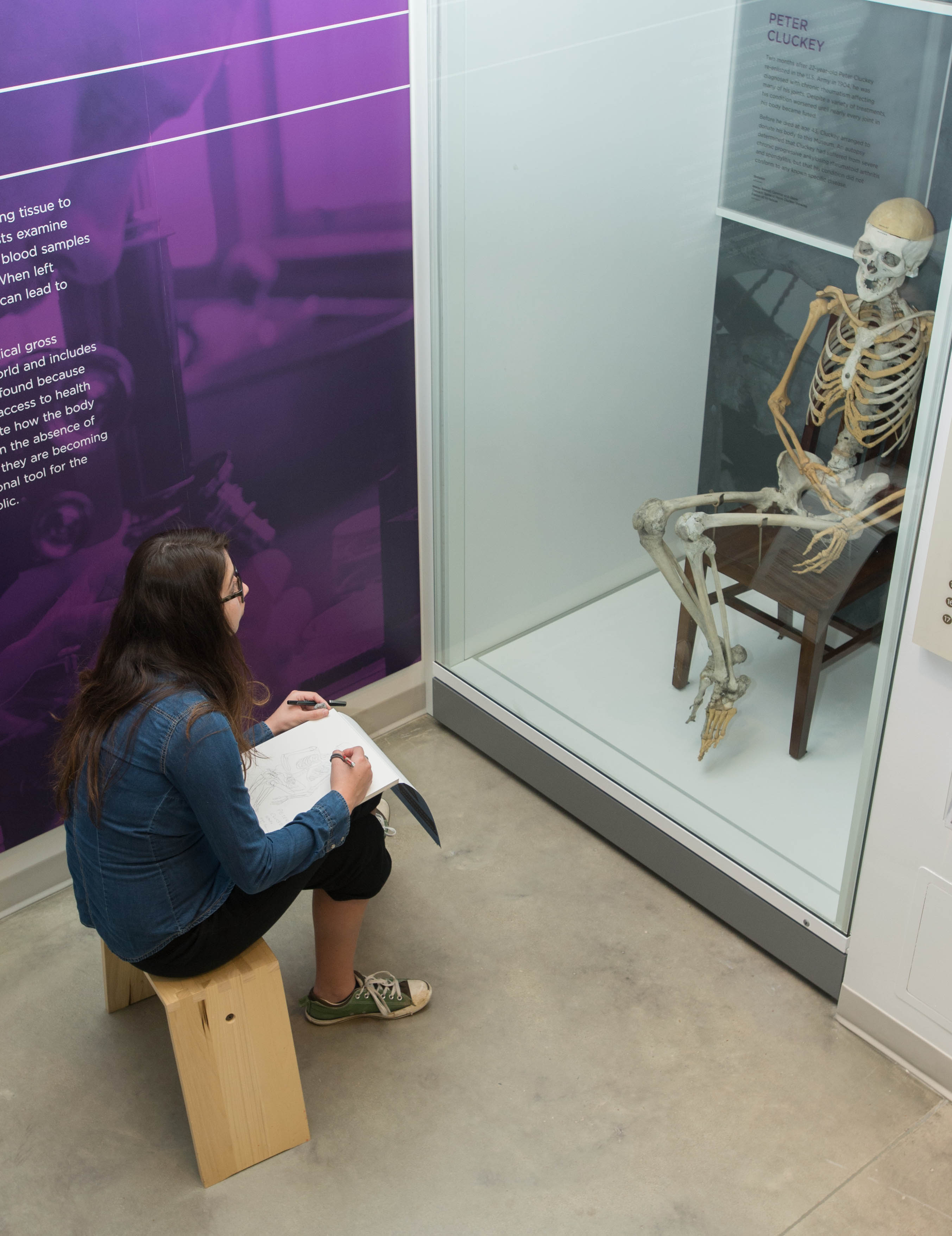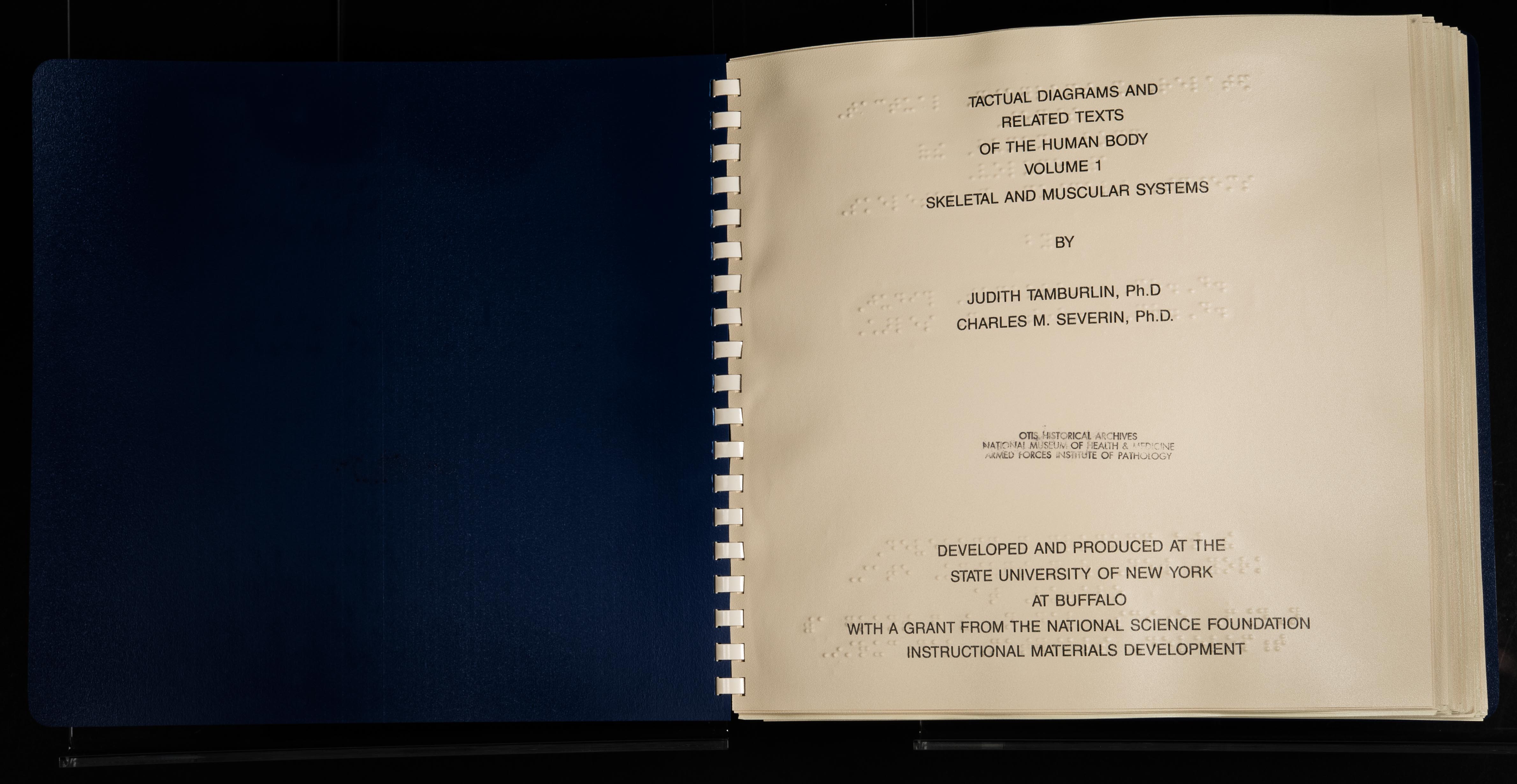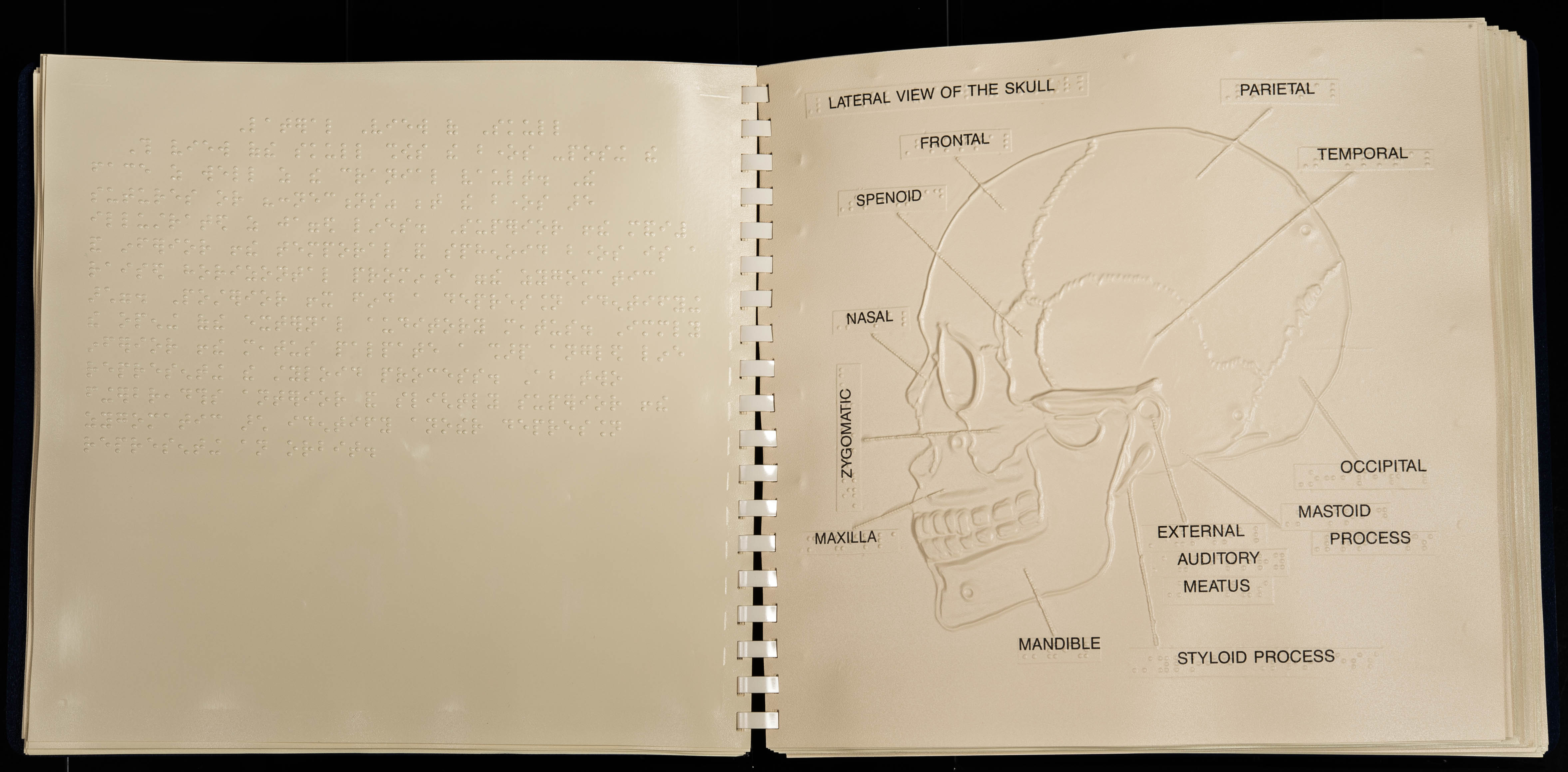Medical Museum Adopts Universal Design with New Accessible Offerings
By Jacqueline Gase
NMHM Public Affairs Coordinator

Newly-installed tactile brain model located in the Anatomy and Pathology Gallery at the National Museum of Health and Medicine in Silver Spring, Maryland. The interactive model was produced by TouchGraphics Inc. (NMHM photo)
"Universal design is about acknowledging and designing for human variation in a way that does not stigmatize based on physical, cognitive, and sensory characteristics," wrote Molly Follette Story, James L. Mueller, and Ronald L. Mace in "The Universal Design File: Designing for People of All Ages and Abilities."
According to the U.S. Census Bureau, approximately 20 percent of veterans 18 years and older have a service-connected disability. While the Department of Defense commits itself to the research and development of therapies and technologies to aid service members, veterans, and others with disabilities, the National Museum of Health and Medicine helps by providing experiences where all people can feel comfortable and included.
"The museum is dedicated to developing inclusive experiences for all visitors by providing accessible programming and features. We seek to enhance the visitor experience by designing tours and exhibits that embrace flexibility and meet the needs of all people," said Andrea Schierkolk, the museum's public programs manager. Two recent additions to the museum, an audio-tactile guide and a tactile brain, provide visitors with a more interactive experience while accommodating those with a disability.
The audio-tactile guide is a booklet with an audio pen that helps guide visitors through the museum galleries while providing information on highlighted objects. The booklet includes braille and large-print text along with raised lines and textures on images. The corresponding smart pen delivers descriptive audio of the text and images. By tapping on the images with the tip of the pen, visitors will hear printed text read aloud and the name of the feature they tapped. Additionally, by tapping repeatedly on the same feature, visitors are able to listen to multiple layers of information that describe the function and appearance of the feature.
Another accessible feature recently installed in the Anatomy and Pathology Gallery is the tactile brain. The tactile brain is an enlarged brain model and a monitor that provides descriptive audio and text about each part of the brain. Different parts of the brain are shown in different colors, and when a visitor touches each area with their finger, the monitor identifies that part of the brain. With additional touches, it gives further information about the function of that part.
These new interactive additions present museum visitors with greater accessibility to our collections and build on our existing accessible offerings for those with disabilities as well as the general public.
For those with limited mobility or with the desire to sit, the museum provides wheelchairs and lightweight cane-stools. For visitors who are hard of hearing, deaf, or prefer visual forms of learning, closed captioning is available on the museum's exhibition video programs. ASL interpretation can also be provided for tours or public programs with advance notice.
For visitors who are visually impaired or those looking to augment their museum experience, a two-volume Braille and Tactile Anatomy Atlas is available for a deeper dive into the skeletal, muscular, nervous, endocrine, cardiovascular, lymphatic, respiratory, digestive, urinary, and reproductive systems of the human body.
Other DoD entities are moving toward accessibility in programming and visitor experience. The National Museum of the Marine Corps provides a program for visually-impaired visitors called History in Your Hands. The tour offers a tactile exploration of objects incorporating verbal descriptions and tactile graphics.
"At NMHM, we are striving to become a more inclusive space for all our visitors, especially our veterans. These additions will provide a more meaningful and interactive experience," said the museum's Education Coordinator Gwen Nelmes.
If you are interested in learning more or would like to plan a visit, call (301) 319-3300 or send an email to USArmy.Detrick.MEDCOM-USAMRMC.List.Medical-Museum@mail.mil.
